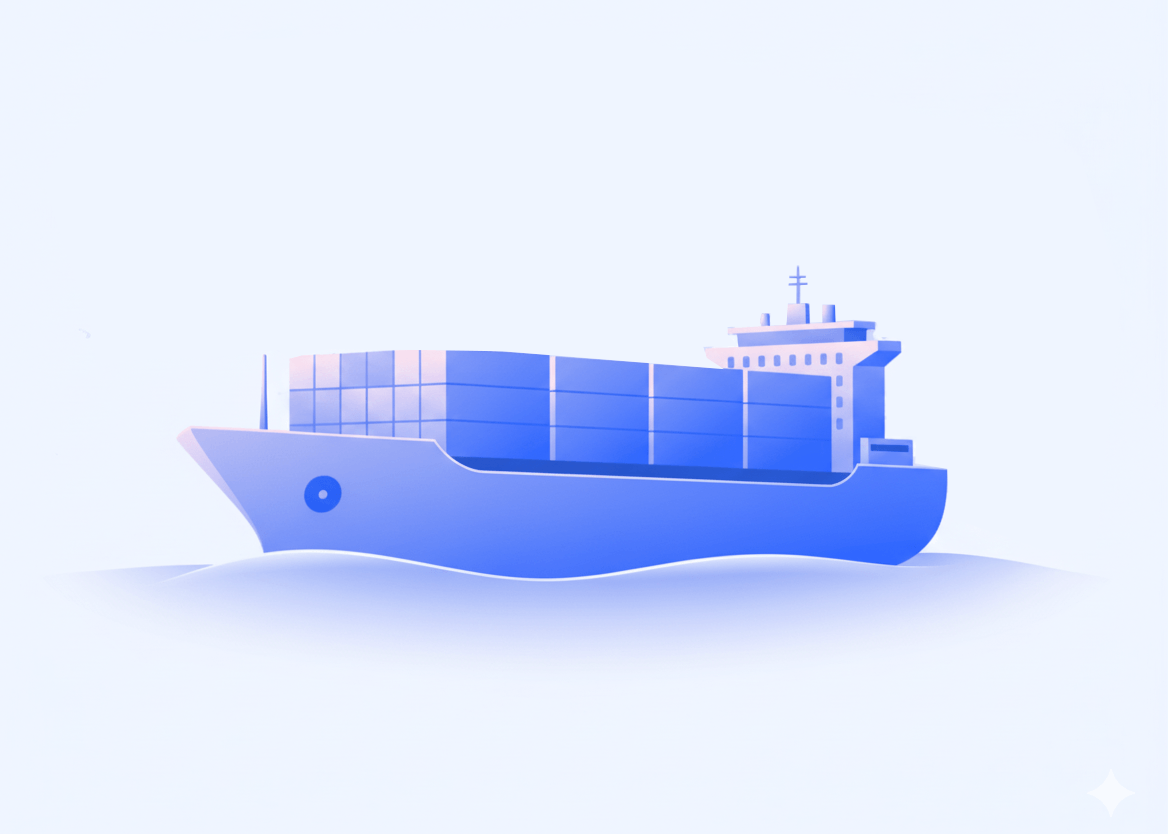How to limit dropship returns at the source

Returns are the silent profit killer haunting every retailer's bottom line. According to recent industry research, 50% of online shoppers have returned a product because the description didn't match what was delivered.
While this challenge persists year-round, Black Friday preparation is now round the corner. Peak shopping seasons consistently amplify the problem, with the National Retail Federation finding that retailers expect their return rate to be 17% higher during winter holidays compared to their annual average.
The numbers tell a sobering story. Returns cost retailers a staggering , with dropship facing unique challenges due to the inherent lack of direct product control. But here's what most retailers don't realize: Dropship returns can actually be prevented before they occur, through intelligent product data management.
The opportunity is massive.
While the industry has long accepted high return rates as the cost of doing business, forward-thinking retailers are discovering that the right technology can stop returns at their source, before products even reach customers.
Why dropship returns present unique challenges
Loading...
Retailers estimate about 17% of their annual sales in 2024 will be returned, with compared to just 8.7% for in-store purchases. Some sectors like apparel see even higher rates, with the return threshold.
But dropship presents a fundamentally different challenge: Unlike first-party or owned inventory, where retailers control product information from source to shelf, retailers running dropship programs depend heavily on suppliers for accurate product data and imagery — creating multiple points of failure that amplify return rates when customers receive items that don't match expectations.
When product information is incomplete, inaccurate or misleading, customers receive items that don't match their expectations. Worse yet, data shows that 80% of shoppers will leave your page for a competitor’s if they can’t find the product information they need.
In dropship operations, the disconnect between expectation and reality is amplified because retailers must rely on supplier-provided data rather than their own product knowledge.
From reactive to predictive: How AI changes the dropship game
The root of the dropship returns crisis lies in outdated technology.
Traditional dropship platforms force retailers into time-consuming manual processes that are both inefficient and error-prone.
Picture this familiar scenario: merchandising teams spending hours reviewing Excel spreadsheets from suppliers, manually chasing missing product information and individually validating data quality before products can go live.
Legacy systems operate on a reactive model — they only catch data quality issues after products are already live and customers are complaining. Without automated workflows, retailers struggle to maintain consistent communication standards with suppliers, resulting in the kind of incomplete or inaccurate product information that drives returns.
McKinsey's research on apparel returns management found that , problems that could be prevented with better product data upfront.
Loading...
The modern dropship automation platform advantage
Dropship technology is experiencing a revolution that centers on one fundamental shift: moving from reactive problem-solving to proactive prevention.
Modern dropship automation platforms embed AI and automation throughout the entire supplier and product lifecycle, creating an intelligent system that prevents issues before they impact customers.
This transformation is already delivering results.
Retailers like Snappy Gifts, using AI-powered automation platforms, get products live 3X faster.
Building a dropship operation that reduces avoidable returns by implementing prevention-first strategies
The transition to a prevention-first approach requires a systematic implementation strategy. Leading retailers are following a three-phase approach that balances immediate impact with long-term optimization — particularly crucial as we approach the holiday shopping season when any operational inefficiencies become magnified.
To help retailers running dropship programs navigate both the implementation process and prepare for peak-season success, we've created a detailed holiday performance tracking framework that you can download here.
Phase 1: Data foundation
The journey begins with understanding your current state. Audit your product data completeness to establish your baseline and identify improvement opportunities.
Industry leaders maintain 97-99% attribute population across their product catalogs, providing a target benchmark for data completeness excellence.
Establish clear supplier data quality standards that align with your brand requirements. These standards should specify required attributes for each category, image quality requirements and description completeness thresholds.
The key is making these standards measurable and enforceable through automated validation rules.
Phase 2: AI integration
With data foundations in place, deploy intelligent categorization systems that can handle the bulk of product classification automatically. Modern systems can process thousands of products in minutes, achieving accuracy rates above 95% while flagging edge cases for human review.
Enable dynamic content enrichment that fills gaps in product information automatically. The most effective implementations start with high-return categories where the impact is most measurable.
Set up predictive compliance monitoring that identifies potential supplier issues before they impact customers. This includes automated scoring systems that rank suppliers based on data quality performance and early warning alerts for declining performance trends.
Phase 3: Continuous optimization
The final phase focuses on creating feedback loops that improve system performance over time. Monitor return reasons and correlate them with product data gaps to identify new opportunities for prevention.
Refine AI models based on actual customer behavior rather than theoretical best practices. This includes analyzing search patterns, conversion rates and customer feedback to optimize product information for real-world usage.
Expand automation to cover edge cases and specialized categories that might have been handled manually in earlier phases.
Three approaches to implementing AI-powered returns prevention
With the holiday season approaching, retailers have several paths to implement these prevention-first strategies, each with distinct advantages and limitations:
Option 1: Enhancing your existing dropship platform
Many retailers attempt to improve their current systems by adding manual processes and quality checks. This approach involves creating detailed supplier guidelines, implementing manual review workflows and establishing regular data audits.
Pros: Lower upfront investment, familiar workflows for existing teams
Cons: Resource-intensive, doesn't scale with growth, reactive rather than preventive, limited effectiveness during peak seasons when manual processes become bottlenecks
Option 2: Adding point solutions
Some retailers choose to supplement their existing platform with specialized tools for product data management, supplier communication or quality control. This creates a patchwork of solutions that address specific pain points.
Pros: Targeted functionality, can address immediate needs
Cons: Integration complexity, data silos between systems, increased vendor management overhead, potential gaps in coverage, higher total cost of ownership
Option 3: Modern AI-powered dropship platforms
Leading retailers are migrating to comprehensive platforms that embed AI and automation capabilities throughout the entire dropship lifecycle. These platforms provide integrated solutions for supplier management, product data quality and automated compliance monitoring — essential capabilities for handling holiday season volume spikes.
Pros: Seamless integration, scalable automation, proactive rather than reactive approach, comprehensive coverage of all dropship functions, single vendor relationship, designed for peak season performance
Cons: Higher upfront investment, transitioning timeline for new operations can be long, requires organizational change management
However, partnering with the right platform provider can accelerate transformation and create competitive advantages that position retailers years ahead of their competition.
Measuring success and competitive advantage
Success in preventing dropship returns requires tracking the right metrics while understanding the broader competitive implications.
Key performance indicators include:
Product data completeness rate (with leading retailers aiming to maintain greater than 90% completeness).
Time-to-market for new suppliers (AI-powered automation typically reduces this by 20-30%, usually enabling a new product to be live within 1 day).
Return rate by product category to identify improvement opportunities.
Customer satisfaction scores for product accuracy.
The competitive advantage is substantial. Industry data shows that retailers with superior product data achieve 54% higher order values compared to those with incomplete product information.
Most importantly, comprehensive product data future-proofs businesses as shopping behaviors evolve. Whether customers browse on mobile devices, use voice search or interact with AI shopping agents, quality product information ensures shoppers can always find what they need, when and where they need it.
The most successful dropship operations will be those that prevent avoidable returns through intelligent automation.
As you head into holiday shopping season, download our readiness checklist to see how prepared your dropship program is for this peak time of year.
Download the dropship holiday readiness checklist here.



